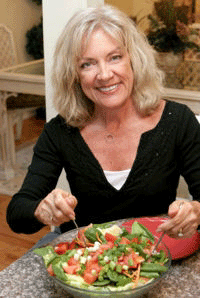Subscribe to this podcast (with higher quality audio) at iTunes.






 He is Martín Sánchez-Jankowski, Ph.D. But here's the real kicker--the man grew up in poverty in rural Mexico. He's come out of poverty, achieved great educational feats, and now he's a true warrior on a mission to not just give a damn, but also do something monumental. And he's packed with all his knowledge, all his cultural capital, and all his dutiful fury.
He is Martín Sánchez-Jankowski, Ph.D. But here's the real kicker--the man grew up in poverty in rural Mexico. He's come out of poverty, achieved great educational feats, and now he's a true warrior on a mission to not just give a damn, but also do something monumental. And he's packed with all his knowledge, all his cultural capital, and all his dutiful fury.He spent most of the 1990s living in housing projects in five chronically poor neighborhoods in New York and Los Angeles, documenting what he calls the “subculture of scarcity” for the recently published Cracks in the Pavement: Social Change and Resilience in Poor Neighborhoods (UC Press).
What he discovered was that the poor, to paraphrase F. Scott Fitzgerald, are different — albeit not in the ways that other sociologists (and many political conservatives) have argued for decades. Impoverished neighborhoods, Sánchez-Jankowski learned, exhibit a fierce sense of self-preservation, constantly reinforcing values that serve to maintain the status quo while protecting against those that threaten their local culture, whether the source is state agencies seeking to impose order or foreign immigrants who bring their alien cultures into public-housing projects.
It’s not that the poor don’t aspire to status and material wealth, in his view. But due to the perception that they’re less likely to achieve them in the ways that middle-class people do — via well-paying jobs, for example — residents of poor neighborhoods are more apt to embrace, or at least tolerate, the underground economy. Similarly, absent the level of social services on which middle-class people regularly depend, gangs and other local institutions often step up to play a constructive role in low-income communities.





"You have obviously never been a white person in the middle of a black bus or community."
There are just some things we ice people are better at.
Why is that so upsetting? Because its been abused in the past?
Privilege? Look at S.A. Its the most violent place on Earth since the change to black power. Look at Katrina. Look at Nigeria. I mean when black folks run things, people die in large numbers.
[...]But I do ask you no matter what your ethnicity, to consider giving up crossing the gaps that can't be crossed and let's work out our problems together.
So I shouldn’t be complaining that I’m a size 5 now should I? Most women will look at me and tell me to shut up, never letting me explain why I have an issue with it. I don’t even think women are even aware of how bad the situation is. And I know men aren’t. I would just like to say that all sizes are NOT created equal.
I used to only shop at clothing stores that catered to urban youth. These stores, for the laymen, are just as trendy (if not more so) than any Bebe, Abercrombie, Pac Sun or Aldo only cheaper and of significantly less quality. Shirts that are hot today are out tomorrow, and new tennis shoes come out every week (I’m not talking about Urban Chic either, I’m talking about the cheap urban wear that’s sold in highly urban areas). After I started making a little money I decided I wanted to shop at the upscale stores (ok whatever, White, which in all honesty the clothes are better quality) I actually like Bebe, Aldo, Express, Banana Republic and whatever else you can find in a mall that’s well made and colorful, there’s just one problem. I have no idea what size I am when I walk into any of them. Not only do I not know what size I am, I know that the size I’m looking for will be marked as a
As far as I’m concerned sizes should be standardized, like with shoes. If I go anywhere in the world an 8.5 is an 8.5 and I’m going to buy it if I like it. Couture is supposed to give you all the options of tailoring, fabrics, design, name etc… but size is never changed in shoes because it would cause too much confusion. But couture with women’s clothing is haphazard. Everyone arbitrarily sets their own size standards and you just have to sort of wander through it. Walking out of Fasion 4 Less in downtown
At Gap, I can’t even fit the extra small… it’s too big. In fact an extra small women’s t-shirt is too big for a guy friend of mine. At Bebe extra small is just tight enough to constrict blood flow to my brain, but a small fits fine. Oh, and pants hover between 1-2. At Wet Seal I used to be a small, but now I’m a medium (I haven’t gained weight, they changed distributors) and dress size 4 (although I suspect this is because Wet Seal is considered Juniors sizes). Anyway WTF. Not only is this pure shopping hysteria, I want you to notice something. All of the urban distributors had me at a larger size, while the upscale stores had me significantly smaller. Well this revelation at first was a bit of an ego boost until I thought about it for a while.
First of all why was I happy I was considered smaller than the smallest size at the Gap? What’s wrong with being bigger? For the sake of sparing you my long personal argument nothing, but as Americans we know that the standard of beauty is Barbie. Tall hourglass blonde, and if you don’t fit that mold you’re fat and ugly. Period. Women all over the world are literally starving themselves to be a size 0. The self esteem of women in this country is very fragile to say the least for ALL kinds of reasons and reinforcements. And reports like the one that was released by CDC last year and the year before saying that X amount of Americans are overweight (which I tend to think is halfway not their fault), the pressure is on to maintain that beauty standard. It’s hard enough trying to maintain yourself throughout the day, let alone up to a national standard.
We also know that Urban is now codeword for colored people. So As I pondered why sizes aren’t standardized, it dawns on me. In White stores they make the sizes bigger to make themselves feel better. It’s completely arbitrary. I feel good calling myself a size 1 as opposed to a size 5. But why were sizes bigger in urban areas? To make them feel bad about themselves? Well as quiet as it’s kept, the rates of bulimia and anorexia are rising in young Black women, especially in urban areas (we know the rates were high in suburban areas already, but they are living directly in a different cultural standard). In Urban stores sizes can go well into the 30’s (or lines like Apple bottom and House of Derrion), but Torrid only goes up to 22 or so. So even in stores designated for larger women, the size discrepancy was still obvious (Torrid also had the nerve to ask me why I was there).
This brings to me to another point, there’s an old adage that says “everybody knows Black women are just big boned”. I used to believe that until I was in situations where I had to deal with large groups of people on a constant basis; women come in ALL sizes. I’ve met some tiny Black women and gargantuan White women. In fact the obesity epidemic is hitting White people the hardest. So again I’m asking what is that statement based on? If people were reporting their own sizes, based on their own shopping habits and it was not reported on a standard scale the results are null and void. Knowing that I personally have no idea what “size” I am makes me wonder if these scientists knew what size anyone really was (the study was based on several factors; BMI, weight and size among them). Yes there’s an epidemic, but are there just more White people shopping at Urban stores because they’re cheap and the economy sucks (or maybe personal preference) and now are reporting larger sizes?
I would say that maybe it’s not intentional, since all stores have different sizes, but I can’t. Every Black store I went to I was a larger size than any White store I went to. I guess I could call this an ongoing experiment since I have to shop, but I feel like if I bring this up then women might realize that size is relative. It’s arbitrary. Your hipline is not the same as your shoe size, there IS NO STANDARD. It’s all just something to either put you down or build you up depending on where you happen to live, the color of your skin or your economic bracket.
I think that the first step we can make to fight this sort of racism is to be aware of it. Maybe we should DEMAND standardized sizes (you’d be amazed how many of us would fit the same clothes). Some cultural norms might get shaken (like Latinas and Black women are big, Asians are tiny, and White women are the standard, whatever that is because last time I checked they’re not created equally). And maybe, just maybe we’d have to take a hard look at each other as women and realize, that just because someone gave you a number doesn’t mean you have to believe it. Maybe we need to consider if it was given to us with the best intentions or not. Maybe we should raise our standards for each other by first of all making standards and dismissing any illogical deviations from that. Well thank you for reading my retail therapy session…
m.
We believe that the Weatherman action is anarchistic, opportunistic, individualistic, chauvinistic, it's Custeristic. And that's the bad part about it. It's Custeristic in that its leaders take people into situations where people can be massacred. And they call that a revolution? It's nothing but child's play. We think these people may be sincere but they are misguided, they're muddle heads and they're scatter brains.
It’s not often that we get a perfect demonstration of white privilege and what it entails. Sure, we talk about it in classes but it’s a difficult concept to grasp. Here’s Tim Wise with a great piece on white privilege and how Sarah Palin benefits from it…
…
To be sure, Palin’s gender has led to unfair scrunity, particularly with regards to her ability to juggle both a career and motherhood. By the same token, however, her race has allowed to escape an even harsher examination.
L.U.S.T. tha Lady
Gabriel Teodros
Public Enemy
Intro by: Afrika Bambaataa